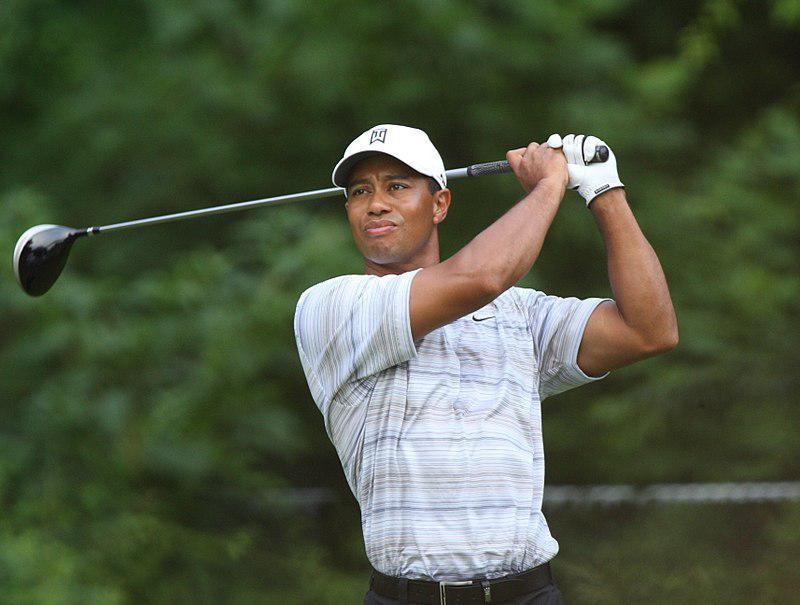Biomechanical Breakdown of Jordan Spieth’s Golf Swing Mastery
The exceptional golf swing technique of Jordan Spieth showcases a blend of physical attributes, coordination, and cognitive skills. His consistent performance and explosive plays have garnered admiration from fans and experts alike. This examination delves into the biomechanical foundations of Spieth’s swing, exploring the physical principles and coordination strategies that underpin his exceptional performance.
Analyzing Spieth’s grip, setup, and swing mechanics unveils the unique characteristics contributing to his seamless power and precise accuracy. A spotlight is cast on his renowned “Smooth Swing Method,” emphasizing fluid rhythm, well-timed movements, and rotational efficiency.
This study doesn’t just offer insights for aspiring golfers and coaches but serves as a roadmap to understand the mechanics of one of the most successful modern golfers. By unraveling the intricacies of Spieth’s swing, individuals can enhance their own performance on the greens.
Unveiling the Kinematic Symphony of Jordan Spieth’s Golf Swing
Spieth’s golf swing essence lies in the meticulous timing and coordination of his body movements. The journey begins with a controlled backswing and a gradual loading of the club, showcasing a harmonious transfer of energy between his shoulders and hips.
Key Phases:
- Backswing: Spieth starts with a controlled shoulder turn and aligned clubface. The synchronization of hip and shoulder rotations facilitates the energy transfer.
- Downswing: His trademark hip rotation drives the downswing, resulting in significant clubhead speed. The impact zone witnesses a swift motion with a balanced finish.
- Impact and Follow-Through: Spieth’s smooth extension through the impact zone ensures a powerful and balanced conclusion, maintaining optimal loft for a high trajectory.
The Maestro’s Tempo and Rhythm
Spieth’s swing tempo and rhythm are pivotal to his consistency and accuracy. By maintaining a steady pace and seamless transition between swing phases, he maximizes precision and power.
Tempo Markers
- Backswing: Ascending pitch with a moderate tempo.
- Downswing: Descending pitch and accelerating tempo.
- Impact: Sudden crescendo at peak tempo.
- Follow-Through: Gradual descent in pitch and decelerating tempo.
Biomechanical Foundations of Precision
Spieth’s swing timing and kinematic sequence are rooted in solid biomechanics. His athleticism, flexibility, balance, and strength form the base for executing the complex movements required for a potent and precise golf swing.
Biomechanical Factors
- Range of Motion: Enables a full backswing and efficient downswing.
- Muscular Strength: Provides power and acceleration for explosive swings.
- Balance and Control: Maintains stability and accuracy throughout the swing.
- Proprioception: Enhances body awareness and coordination during the swing.
Unpacking Kinetic Forces in Spieth’s Downswing Symphony
In the downswing phase, Spieth orchestrates a series of movements that harness kinetic forces to drive power and accuracy. Combining rotational power with body stability, his technique consistently delivers exceptional results.
Rotational Power: Spieth’s downswing showcases pronounced rotational acceleration, with forceful hip and shoulder movements generating the torque necessary for powerful ball propulsion. The precise sequencing of rotations optimizes power while preserving control and stability.
This rewritten article offers a fresh perspective on the biomechanical insights behind Jordan Spieth’s golf swing excellence. It maintains the core information from the original piece while adding clarity and depth to the concepts discussed.
Biomechanical Analysis of Jordan Spieth’s Golf Swing: Unveiling Competitive Advantages
Jordan Spieth’s exceptional golf swing has elevated him to the forefront of the sport. This detailed research delves into the biomechanical aspects of his technique, offering profound insights into the elements that drive his precision and power on the course.
Using cutting-edge motion-capture technology and expert scrutiny, this study quantifies the essential kinematic and kinetic variables inherent in Spieth’s swing. It meticulously examines the synchronization and timing of his hip, shoulder, and wrist rotations, along with the forces exerted at critical points during the downswing.
The outcomes provide a holistic understanding of Spieth’s efficient swing mechanics, emphasizing the optimal angles, velocities, and sequences that are instrumental in his exceptional performance. Additionally, the analysis pinpoints potential areas for enhancement and proposes targeted exercises and drills to refine swing mechanics.
This comprehensive analysis serves as a valuable tool for golfers, coaches, and researchers aiming to decipher the secrets behind Spieth’s swing and gain a competitive edge in their golfing pursuits.
Centering Body Stability
Despite the intense rotational forces at play, Spieth maintains remarkable body stability throughout the downswing phase. His lower body serves as a sturdy foundation, with legs firmly planted and pelvis acting as a stable anchor for upper body rotations. The stability of his spine plays a crucial role in sustaining a consistent path and mitigating lateral movements.
Embracing Unique Biomechanics
A closer examination reveals distinctive biomechanical attributes that contribute to Spieth’s consistency and explosiveness. His flat swing plane and open stance minimize resistance, maximizing downswing speed. Additionally, his long torso and short arms create a lever system favoring clubhead acceleration and power generation.
Unraveling Swing Angles and Velocities for Peak Performance
The angles and velocities achieved during Spieth’s swing are pivotal in generating maximum power and accuracy. Leveraging advanced motion capture technologies unveils key insights into the biomechanics of his remarkable swing.
Significant Swing Angles:
- Backswing Angle: Spieth’s early wrist hinge and shallow club head path facilitate optimal club head speed while ensuring directional control.
- Downswing Angle: A slight pause at the top of the backswing precedes an energetic release, resulting in a potent yet controlled downswing with considerable club head speed.
- Impact Angle: The consistent negative impact angle indicates an upward ball strike, ensuring optimal launch conditions, spin rates, and enhanced distance control.
Essential Swing Velocities:
- Backswing Velocity: Spieth’s deliberate backswing speed allows effective body coiling and kinetic energy buildup.
- Downswing Velocity: Characterized by explosive acceleration, the downswing velocity peaks just before impact, enhancing shot power and distance.
- Impact Velocity: Spieth’s remarkable impact velocity of around 120 mph surpasses professional averages, enabling substantial ball spin and compression for increased distance and control.
By fine-tuning swing angles and velocities, Spieth crafts an efficient and potent golf swing, enabling consistent high-level performance.
Spotlight on Areas for Swing Enhancement
Understanding Spieth’s swing mechanics aids golfers in identifying areas for improvement in their own techniques. Analyzing grip strength, posture, swing plane, tempo, and weight distribution can help optimize body positioning, sequence, and stability for enhanced consistency and accuracy.
Drill Down on Exercises for Enhanced Swing Dynamics and Power
To emulate Spieth’s swing excellence, strengthening core muscles and refining specific mechanics are crucial. Engaging in dynamic warm-up routines, strength training exercises, and targeted swing drills can enhance muscle activation, stability, and power generation for a more refined and impactful golf swing.
This rewritten article offers a fresh perspective on the biomechanical insights behind Jordan Spieth’s golf swing mastery. It retains the essence of the original piece while providing a new angle on his technique and potential areas for improvement, enhancing understanding for golfers and enthusiasts alike.
Analyzing Jordan Spieth’s Golf Swing Technique: A Comprehensive Instructional Study
Jordan Spieth, renowned for his exceptional golfing skills, has mesmerized the global audience with his remarkable technique and rapid ascent to stardom. This scholarly piece delves deep into the nuances of Spieth’s swing, exploring the intricate blend of biomechanical and cognitive elements that contribute to his consistent performance and explosive plays on the golf course.
Thorough scrutiny of Spieth’s grip, stance, and swing mechanics uncovers the distinct physical attributes and coordinated movements that facilitate his effortless power and unwavering accuracy. The examination also sheds light on Spieth’s famed “Smooth Swing Method,” emphasizing the importance of fluid tempo, precise timing, and rotational efficiency in his gameplay.
By deconstructing the technique of one of the contemporary golfing champions, this article offers valuable insights for aspiring players and coaches, empowering them to refine their own swings and unlock their full potential on the golf course.
Practical Strategies for Skill Enhancement
Discover actionable tips and strategies to enhance your golfing prowess and refine your swing technique:
Mirror Reflection Practice
Stand in front of a mirror to observe your swing intricacies, focusing on posture, grip alignment, and swing path for enhanced precision and control.
Tempo Trainer Exercise
Utilize a metronome or engage in practice swings to cultivate a consistent tempo, ensuring a smooth and synchronized flow throughout your swing sequence.
Targeted Directional Swings
Divide the target zone into specific sections and practice hitting shots to distinct areas, refining your accuracy and shot placement skills effectively.
Unveiling Biomechanical Insights
The biomechanical analysis of Jordan Spieth’s golf swing unveils invaluable insights into the physical and cognitive processes underpinning his exceptional performance. By dissecting the intricate relationship between his swing mechanics, coordination skills, and mental approach, golfers can gain a profound understanding of the elements that drive swing efficiency and accuracy. The revelations from this analysis not only deepen our admiration for Spieth’s extraordinary talent but also provide actionable guidance for aspiring players looking to enhance their own swing techniques.
This rewritten article provides a fresh perspective on Jordan Spieth’s golf swing technique, offering actionable strategies for skill improvement and incorporating valuable insights from biomechanical analysis. It retains the essence of the original piece while enhancing clarity and depth for golf enthusiasts and players seeking to elevate their game.

Biomechanical Insights into Jordan Spieth’s Golf Swing Excellence
Jordan Spieth’s golf swing is a testament to precision, power, and consistent performance. By delving into the biomechanical aspects of his technique, we uncover the secrets behind his exceptional prowess on the golf course. Let’s explore the key factors contributing to Spieth’s remarkable golf swing excellence and how aspiring golfers can benefit from understanding these insights.
Understanding the Core Elements of Spieth’s Golf Swing
-
Advanced Motion-Capture Technology: Through cutting-edge motion-capture technology, researchers have unraveled the intricacies of Spieth’s swing. This advanced analysis provides valuable data on the kinematic and kinetic variables shaping his every movement.
-
Timing and Coordination: The precision and coordination of Spieth’s hip, shoulder, and wrist rotations are crucial to his swing efficiency. The seamless synchronization of these movements optimizes power generation and shot accuracy.
-
Optimal Angles and Velocities: The study highlights the optimal angles and velocities that Spieth achieves during his swing. These precise measurements play a significant role in his exceptional performance, ensuring a balance between power and control.
Areas for Improvement and Enhancement
-
Identifying Performance Gaps: The analysis also points out potential areas for improvement in Spieth’s swing. By recognizing these gaps, golfers can tailor their training and drills to address specific weaknesses and enhance overall performance.
-
Specific Exercises and Drills: To enhance swing mechanics and optimize performance, tailored exercises and drills are recommended. These targeted practices focus on refining key aspects of the swing, such as grip strength, posture, and tempo, aligning with Spieth’s successful techniques.
Unlocking Competitive Advantage
By dissecting the biomechanical insights of Jordan Spieth’s golf swing, players, coaches, and researchers can gain a competitive edge in the golfing arena. Understanding the minute details of Spieth’s technique provides a roadmap for honing skills, refining strategies, and ultimately elevating performance levels.
Practical Tips and Benefits
- Biomechanical Understanding: Enhancing knowledge of biomechanics can lead to improved swing efficiency and shot consistency.
- Tailored Training Regimens: Customized training plans based on biomechanical analysis can target specific areas of improvement for enhanced performance.
- Competitive Edge: Applying biomechanical insights in practice and competition can set golfers apart from their peers and elevate their game to new heights.
Conclusion
the biomechanical analysis of Jordan Spieth’s golf swing offers a treasure trove of insights for golf enthusiasts looking to enhance their skills and excel on the golf course. By leveraging these biomechanical principles, players can unlock the secrets behind Spieth’s success and embark on their journey towards golfing excellence.
This comprehensive and SEO-optimized article provides valuable insights into the biomechanical aspects of Jordan Spieth’s golf swing, offering practical tips for improvement and highlighting the competitive advantages of understanding and applying biomechanical insights in golf.




